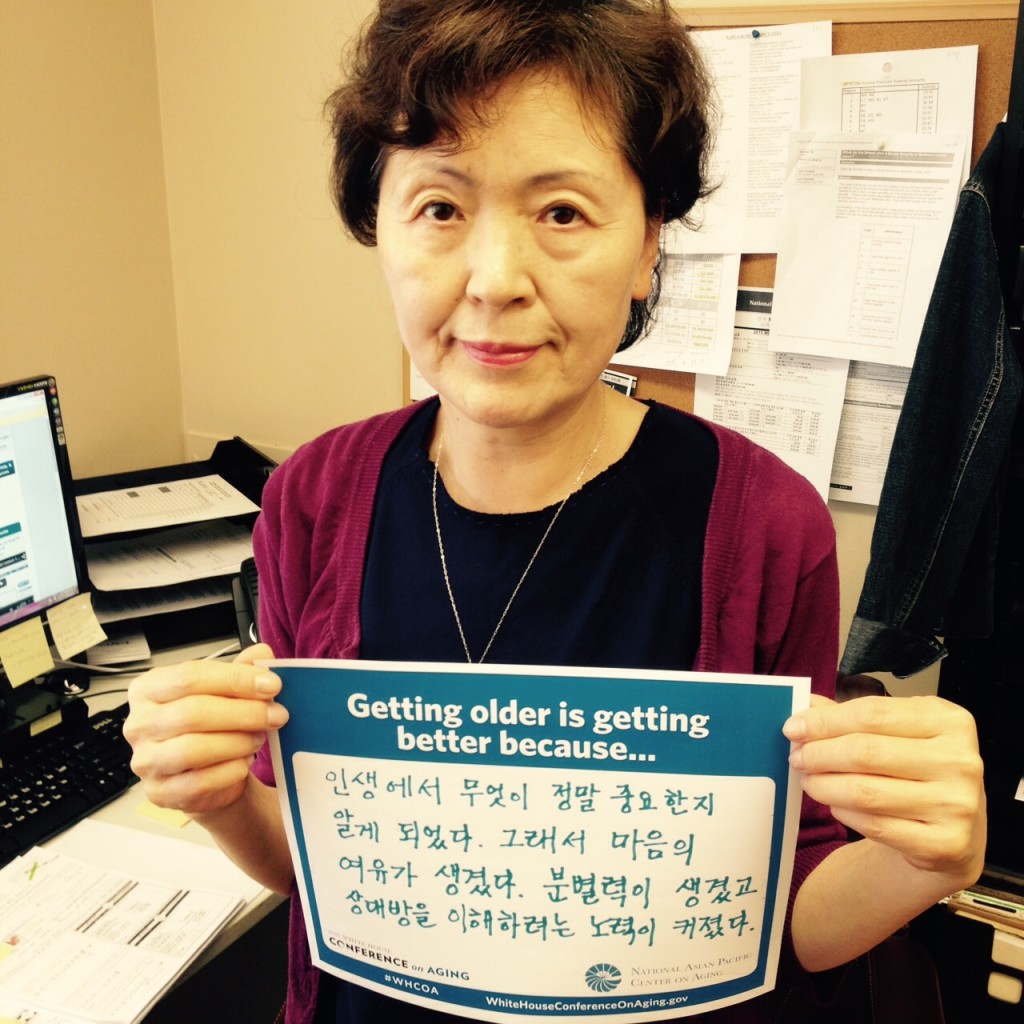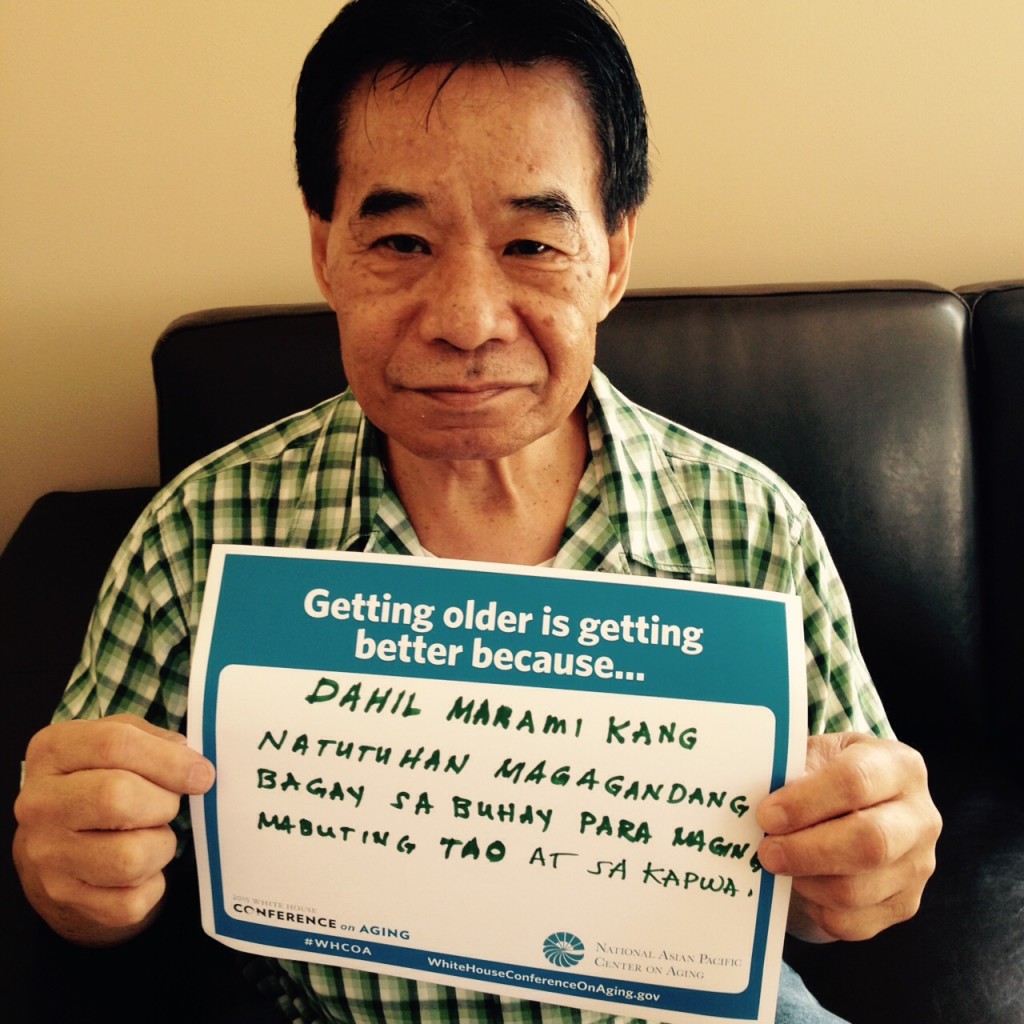Convening the 2015 White House Conference on Aging (WHCOA) was no easy task with its limited budget, minimal staffing, and a relatively short planning process. In spite of these challenges, the WHCOA delivered high-quality and thought-provoking discussions that allowed the nation to reflect on our assumptions of aging, to be inspired by innovation, and to be meaningfully engaged in the democratic process.
I resonated with JoAnn Jenkins’ presentation on “disruptive aging” whereby she challenged us to redefine what it means to age. When applying this concept to our spheres of influence in our aging network, I believe that we need to (1) be open to new philosophies and values that root us in our missions, (2) adopt new business models and re-align our organizational structures, and (3) build new partnerships with those who want to commit to shared outcomes. I’m a firm believer that if we want different results, we must do things differently. If aging policy is a national priority like we claim it is, then let’s disrupt our traditional model of a once-a-decade WHCOA and change our behavior to having annual WHCOA events so that we can continue to improve national aging policies on a regular basis.

At NAPCA, we believe in reshaping aging policy for all older Americans by shining the spotlight on Asian American and Pacific Islander (AAPI) elders to ensure that AAPI elders have access to and equity in the services, benefits, and programs that are available to all American seniors. Therefore, we recommend the following:
- Disaggregate AAPI Data – Designing social policy starts by examining the data. Disaggregated data demonstrates that AAPI subgroups face greater challenges than what aggregated data suggests. Therefore, we recommend adopting higher standards for collecting, reporting, and analyzing disaggregated data to provide a more accurate picture of diverse AAPI older adults.
- Adopt Person-centered Planning – Person-centered planning reflects the wants and needs of the individual, rather than the requirements of the service delivery system, to create a care plan for the future. With over 20 ethnicities within the AAPI population that speak over 40 different languages and dialects, we recommend person-centered planning that reflects one’s unique preferences and values based on their ethnicity, gender, culture, and age, among other variables.
- Provide Language Access – AAPI seniors who have a limited ability to read, speak, write, or understand English need language assistance, including translation and interpretation, to navigate aging network services. Cultural competence, or the ability to interact effectively with persons of different cultures, is also a key component of effective communication with AAPI elders with limited English proficiency (LEP). Therefore, we recommend that all publicly funded programs take reasonable steps to ensure meaningful access for LEP seniors and their families.

We thank the White House for convening this event and for giving us a platform for post-WHCOA engagement with our AAPI communities. Upward and onward!
The opinions expressed in this article are those of the author and do not necessarily reflect those of the Diverse Elders Coalition.

